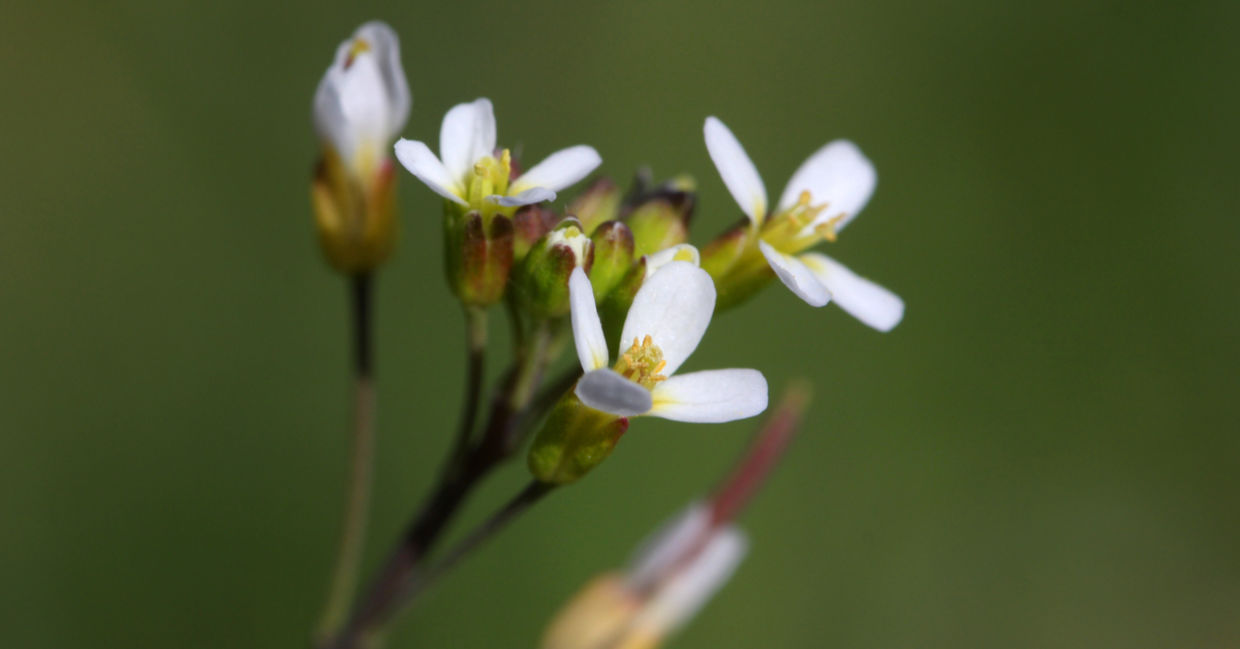
(lehic / Shutterstock.com)
Some plants have medicinal qualities. Aspirin is made from willow bark and was used as a pain reliever for centuries. Taxol, a chemotherapy drug, is made from the Pacific yew tree. Other healing plants are used in natural medicine like milk thistle, aloe, and echinacea.
Now, a plant that was always thought to have no medical uses may be a better treatment for breast cancer. New research from Brunel University in London and the University of London has found that treated leaves from the Arabidopsis thaliana or thale cress may be the key to a better treatment for breast cancer according to a Brunel news release.
The common weed’s leaves were coated with the plant hormone jasmonate – that boosts plant response to stress – and the leaves were then incubated with breast cancer cells and normal cells. The researchers found that the cancer cells stopped growing and that normal cells were not affected.
“I am truly excited to have discovered the amazing impact this unassuming plant has on breast cancer cells. It just proves that even plants with a non-medicinal pedigree can work for cancer treatment,” Professor Alessandra Devoto at Royal Holloway, University of London and a member of the research team said in the news release.
“The plant is very much like the ‘Cinderella’ of the medicinal plant world – no one thought it was so special, but it has shown its true colors via our research. The discovery has important implications in developing treatments for cancer as well as other diseases,” she said.
The researchers who published their study in the journal New Phytologist, chose to use thale cress in their study because it belongs to the Brassica or cabbage family, according to Forbes. Bioactive chemicals that have anticancer properties have been found in other plants in that family including broccoli sprouts, cabbage, and Chinese kale.
While this study only looked at the effect of thale cress leaves on breast cancer cells, Devoto told Forbes that there is no reason to think that the anticancer effects are limited to only one type of cancer. “We are looking forward to continuing our collaboration to identify the plant-derived chemicals that interfere with breast cancer cells as well as with other diseases and to progress this research by gathering more funding to benefit society more widely,” she said.
Other plants are also being studied for their anticancer properties. In 2019, two Indonesian teens rocked the medical world when they presented their research about the healing properties of the bajaksh tree at a competition in Seoul, South Korea.
The high school students presented evidence that the roots of the tree cured cancerous tumors in rats and they won a gold medal for their work. They are continuing their research thanks to grants from the Indonesian government with the help of the University of Indonesia.
Since ancient healers used herbal remedies for thousands of years, taking another look at common plants for modern medical uses makes a lot of sense. Who knows, the cure for cancer could be growing in your own backyard.
YOU MIGHT ALSO LIKE:
New Incision-Free Ultrasound Treatment for Prostate Cancer Unveiled
New Blood Test Screens More than 20 Types of Cancer
Pfizer Offers New Hope







